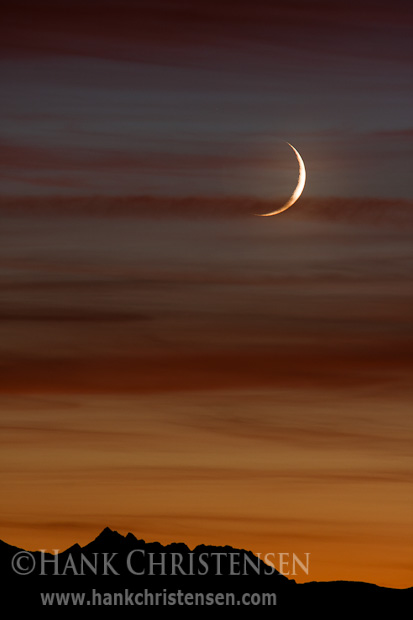
This week’s shot was taken a few weeks ago from high atop the crest of the White Mountains, at about 11,500 feet elevation. The moon was setting about half an hour behind the sun, providing an opportunity for a nice crescent moon, lit up by the dramatic colors of sunset. My particular location allowed me to anchor the photo with the silhouetted crest of the eastern Sierra, giving the image weight and a sense of scale and perspective.
On the technical side, in order to achieve this photo, I had to pull out all the stops. In order to keep the shutter speed down, I bumped up my ISO to 200 (I try to shoot most of my landscape work at 100). I didn’t want to go any higher, so I could keep the dark, rich tones of the sunset relatively noise free. I used my 100-400L lens at 310mm, and locked it down onto my tripod. I also made sure to turn off the image stabilizer, because if it kicked in here, it would most likely lead to a blurrier photo than I’d get without it. Finally, I locked up the mirror and set the camera to a 2 second self-timer mode. Unlike Nikon, with the 2 second self-timer, Canon cameras will lock the mirror when you press the shutter release, wait two seconds, and then trip the shutter. This allows the camera itself 2 seconds to settle down after being rattled by the vibration of the mirror slap. Normally, none of this matters, but at this magnification along with the 1.3 second shutter speed I used, even small vibrations will degrade the photo. I framed my shot, held my breath, and pressed the shutter release. Two seconds later I had the photo I wanted.
